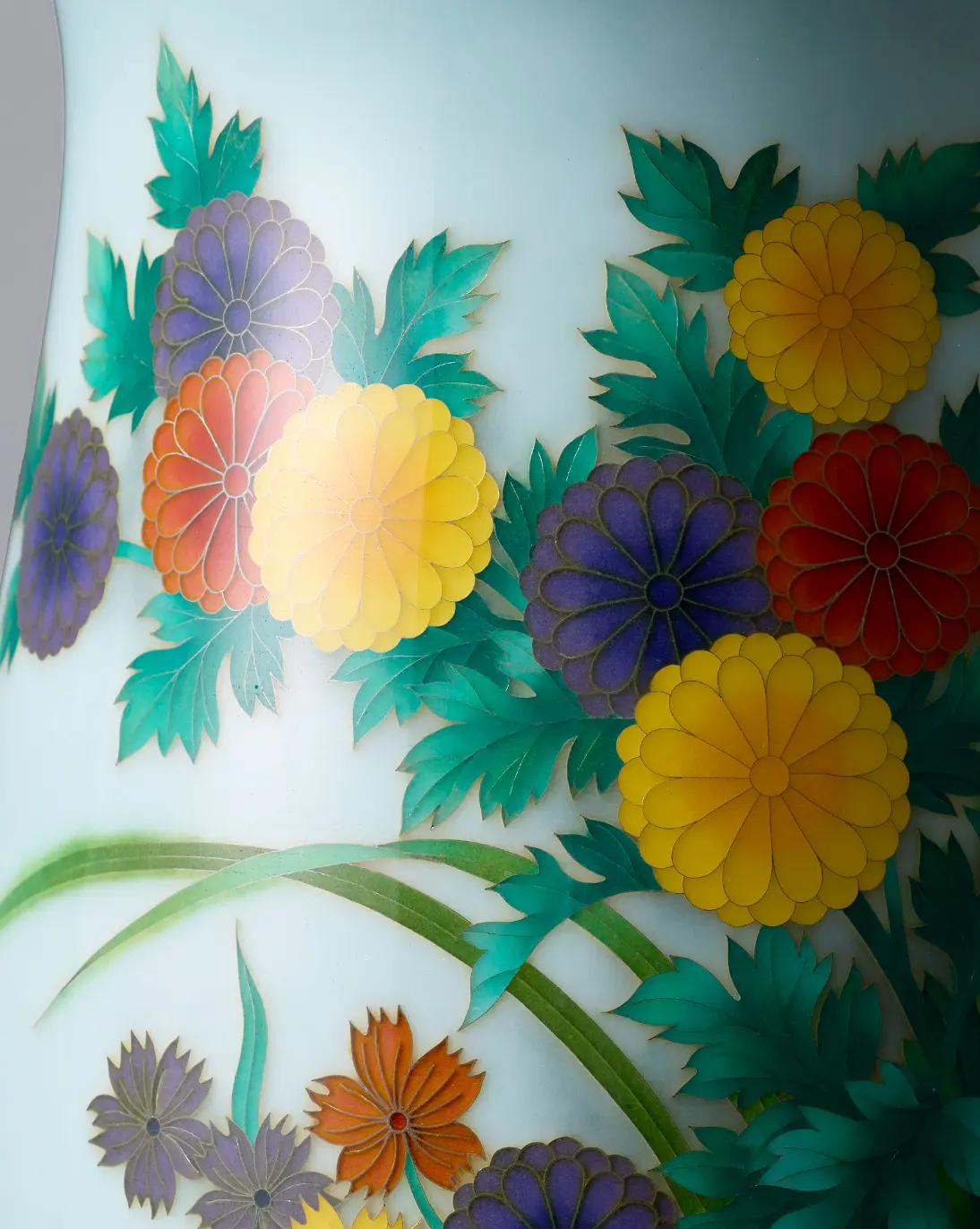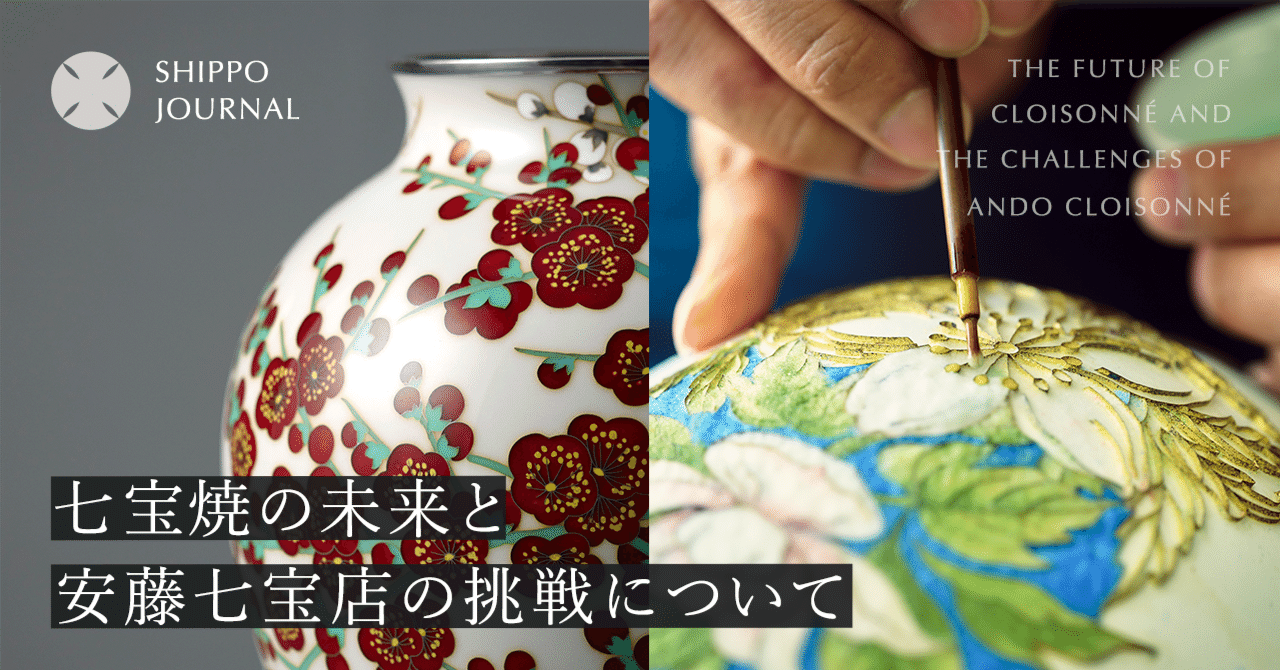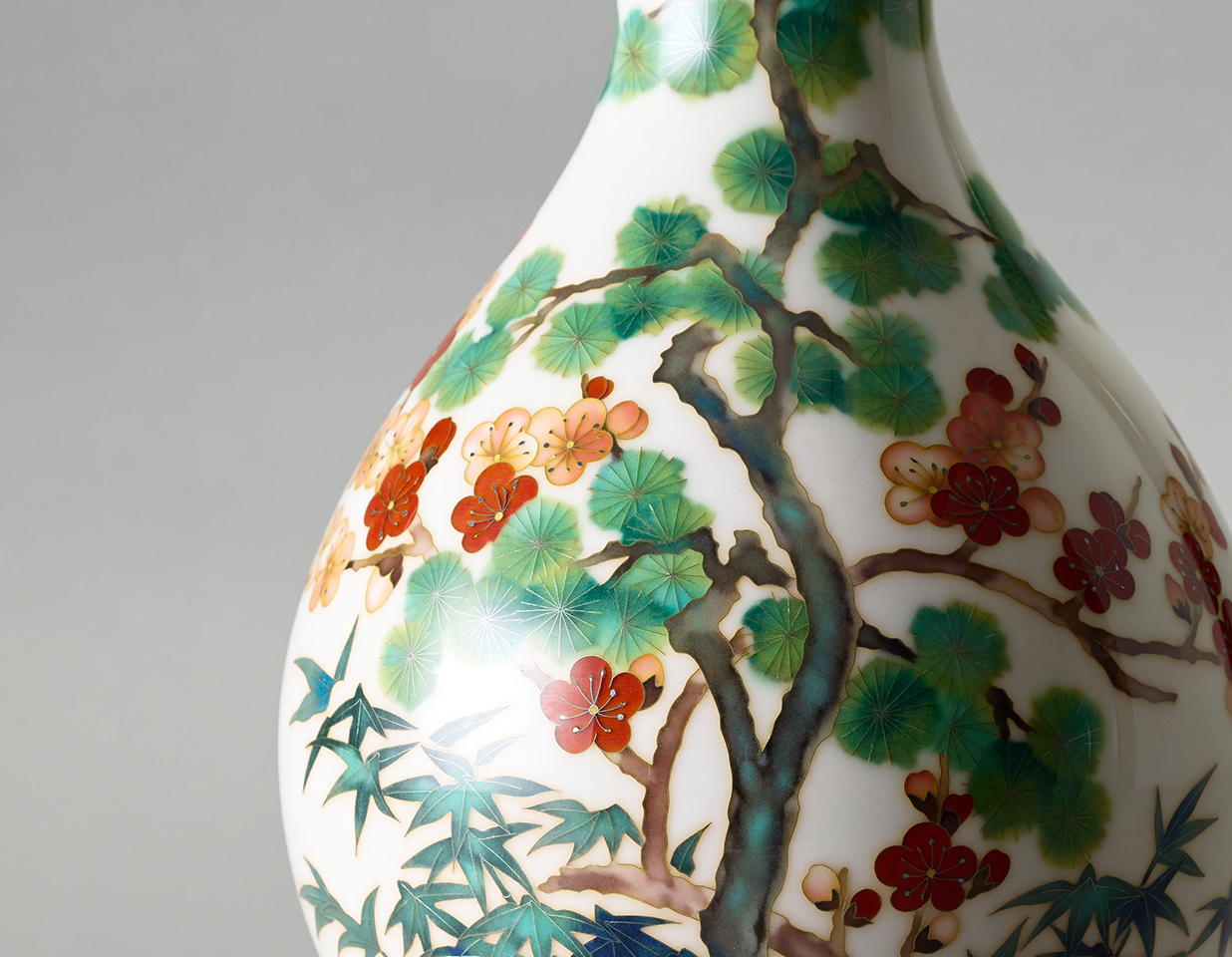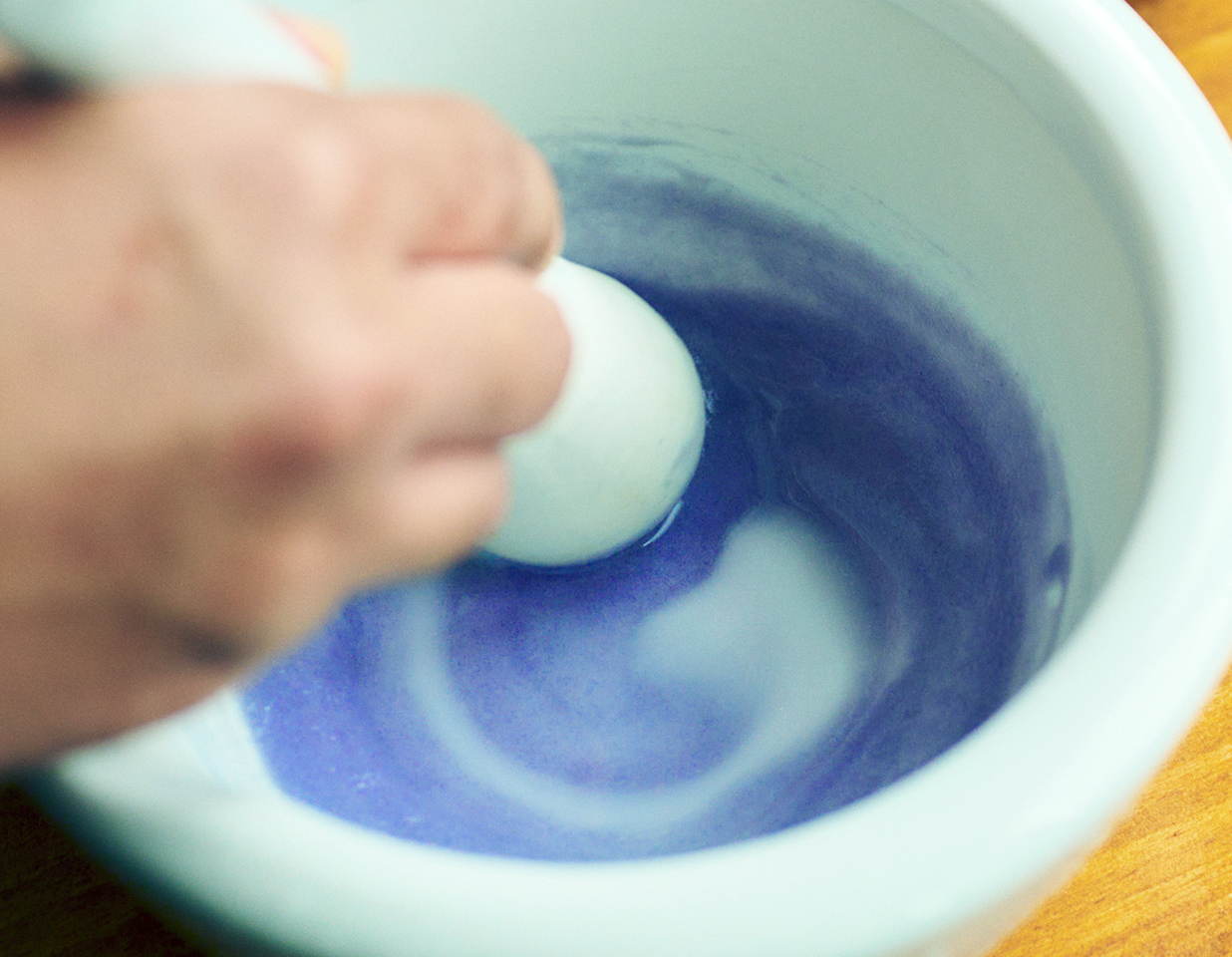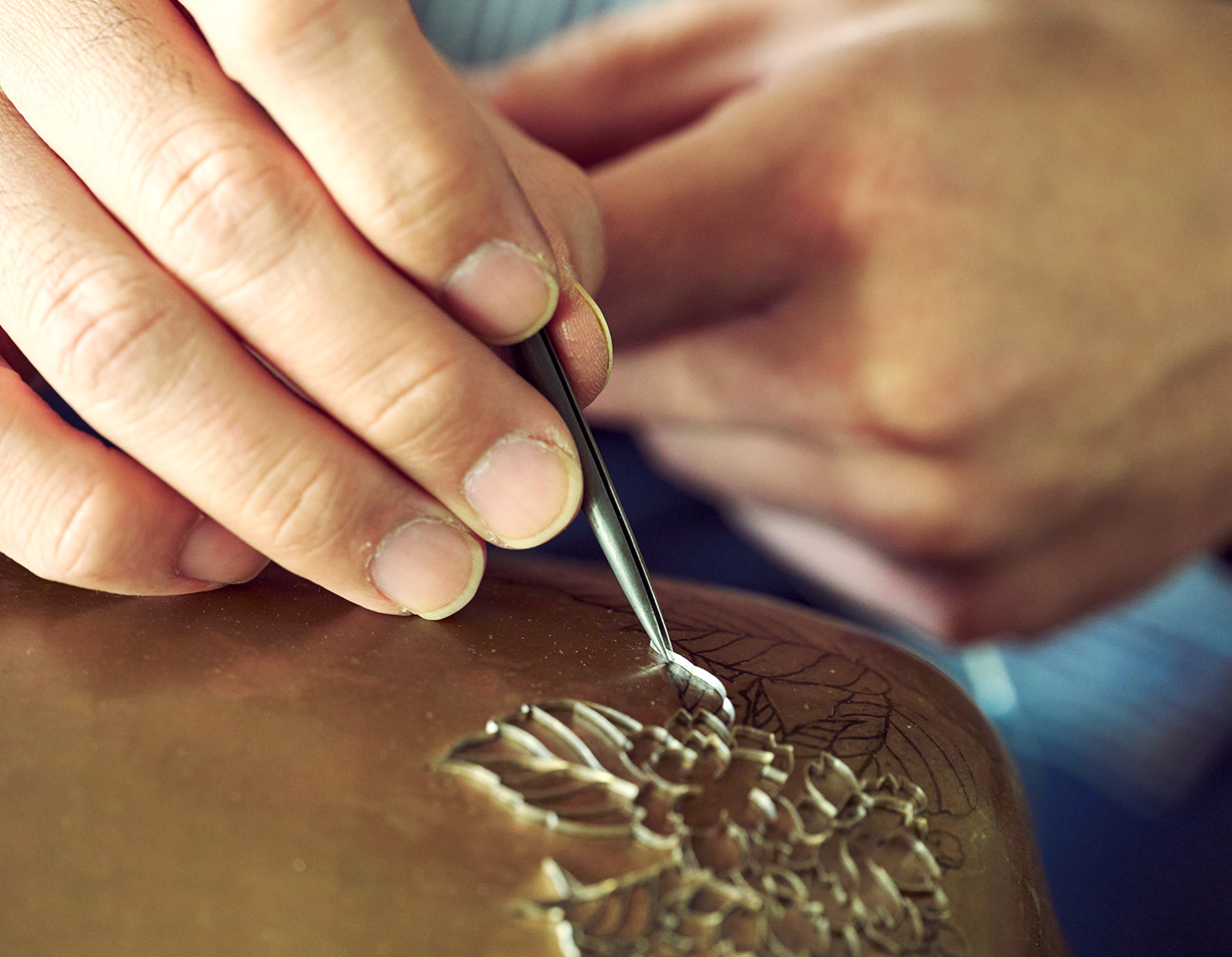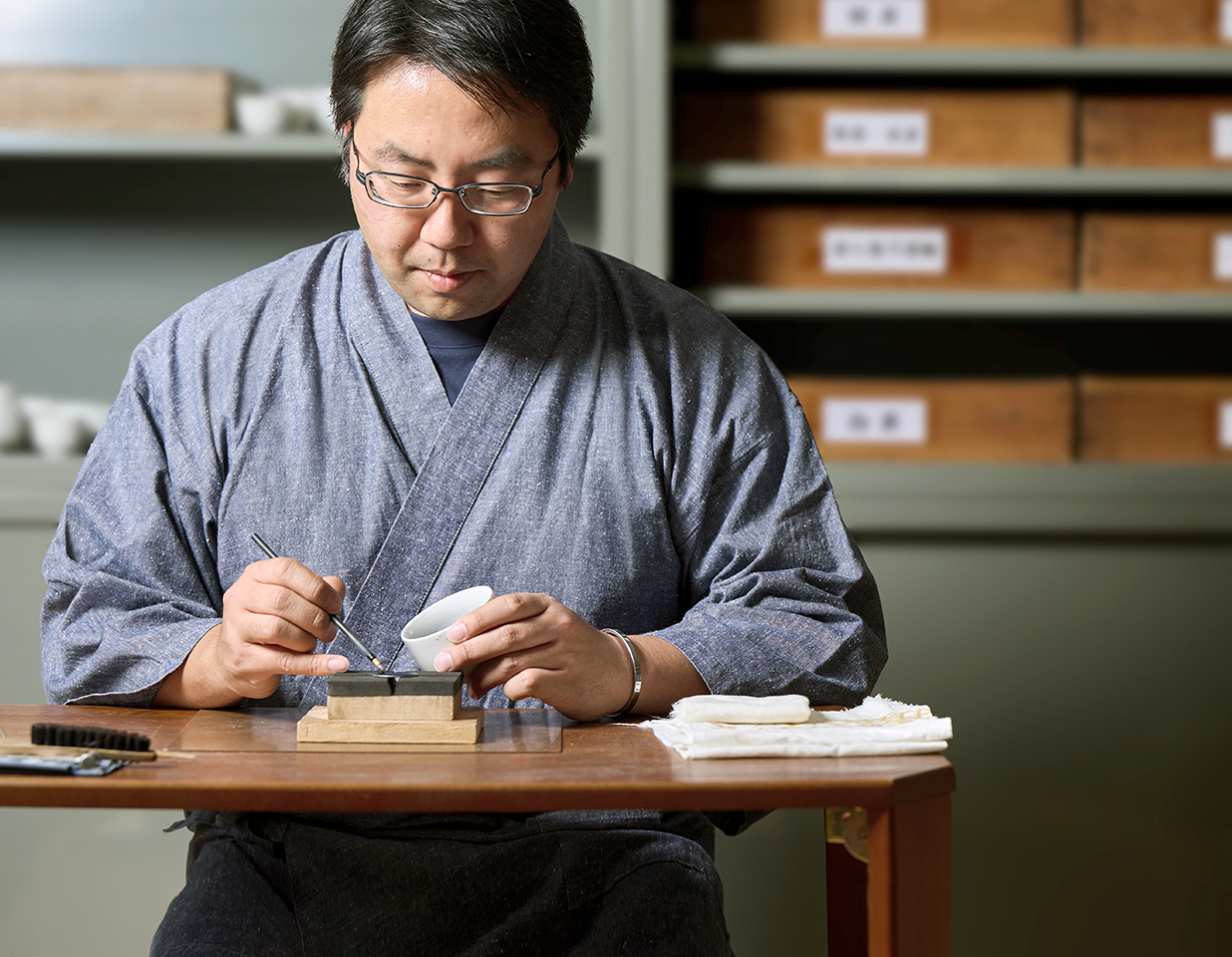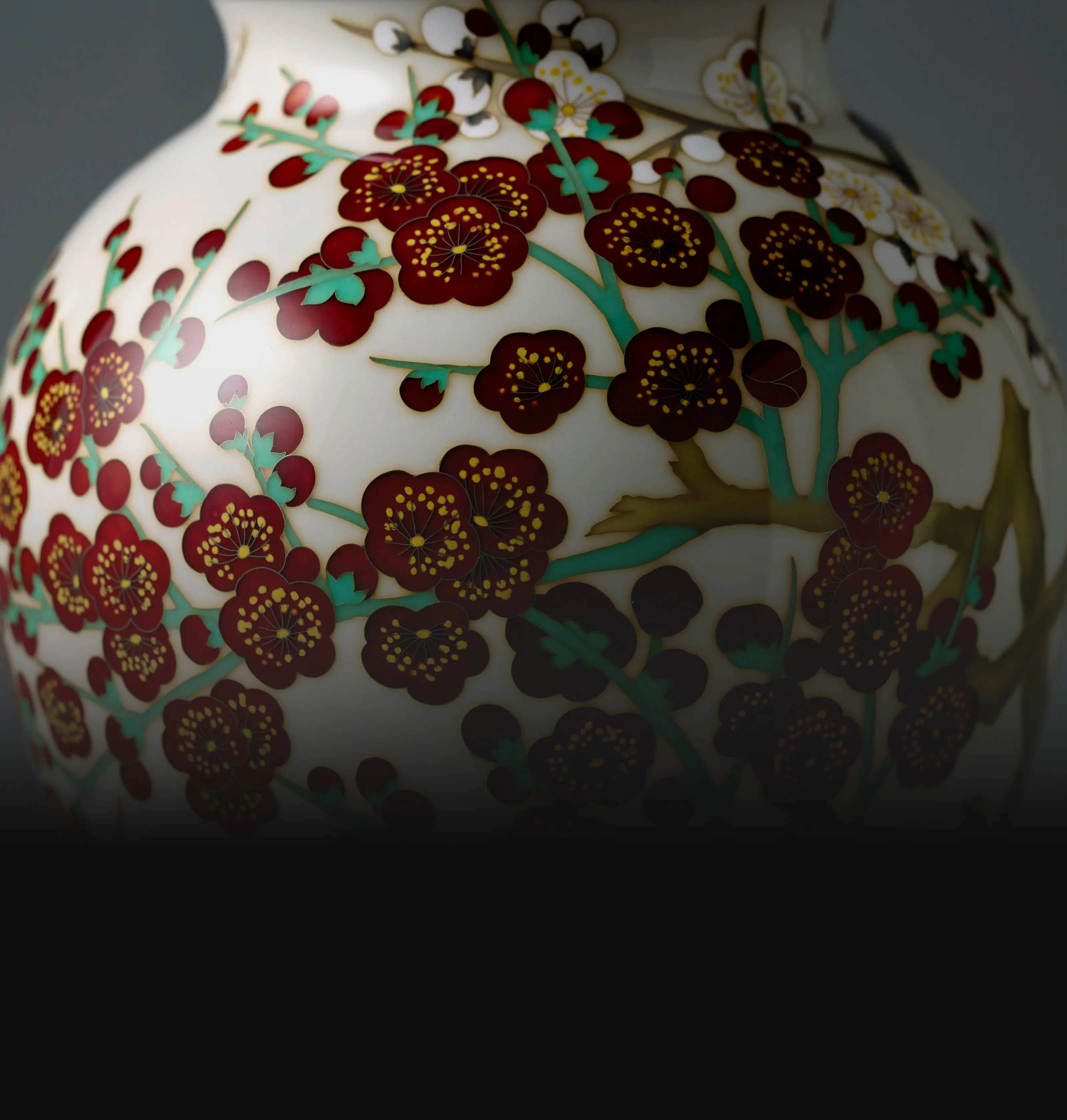Cloisonne Expressions and Traditional Techniques
Expressions and Techniques
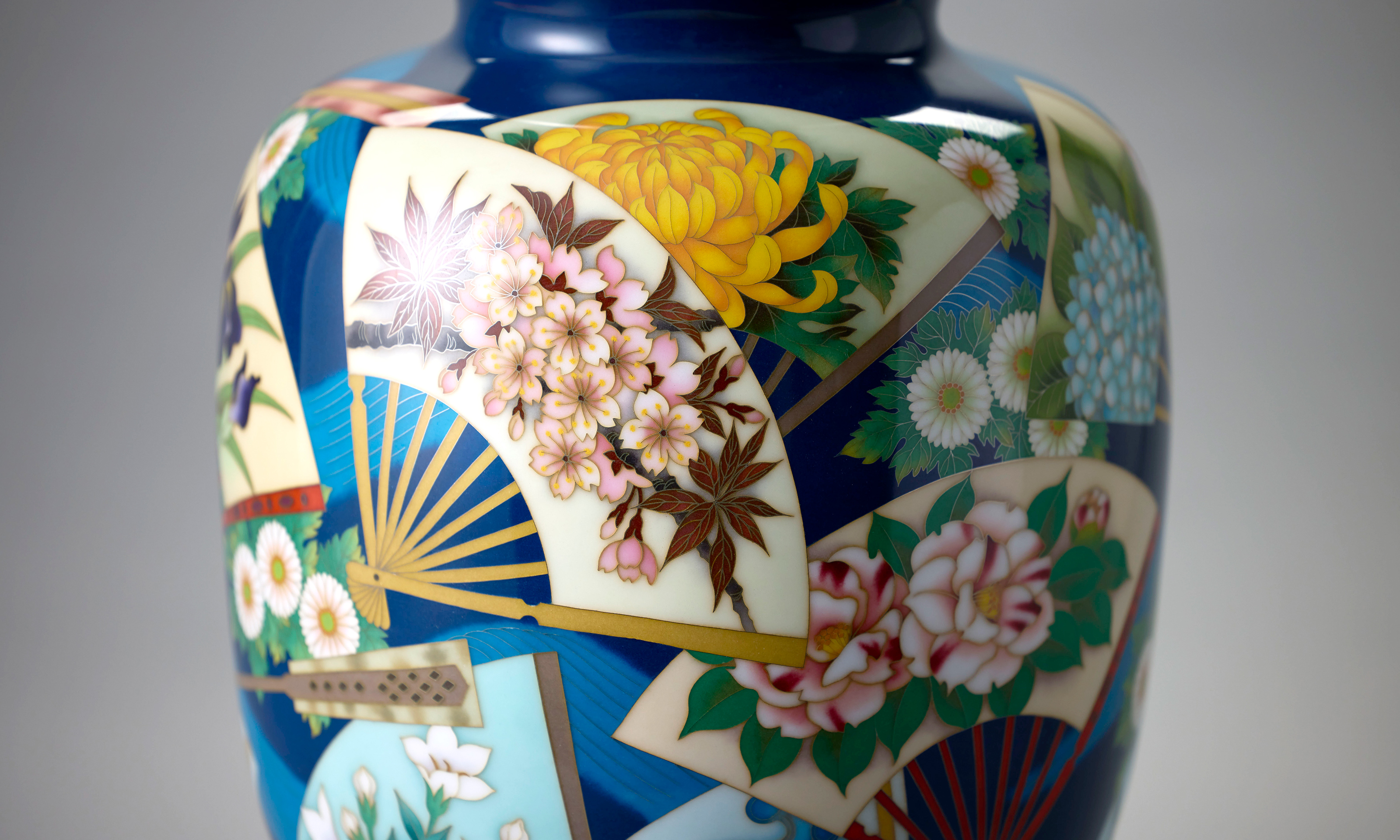
Cloisonne, a craft as beautiful as seven jewels.
Cloisonne is an art form where patterns drawn on metal bases like copper or silver are using glass enamels and fired. Unlike ceramics, which are formed and fired from clay, cloisonne involves painting with glass colors, creating a luminous beauty and depth with overlapping hues. Cloisonne is filled with vibrant and varied enamels, carefully fired onto a metal base, and requires highly skilled craftsmanship, attainable only by experienced artisans.
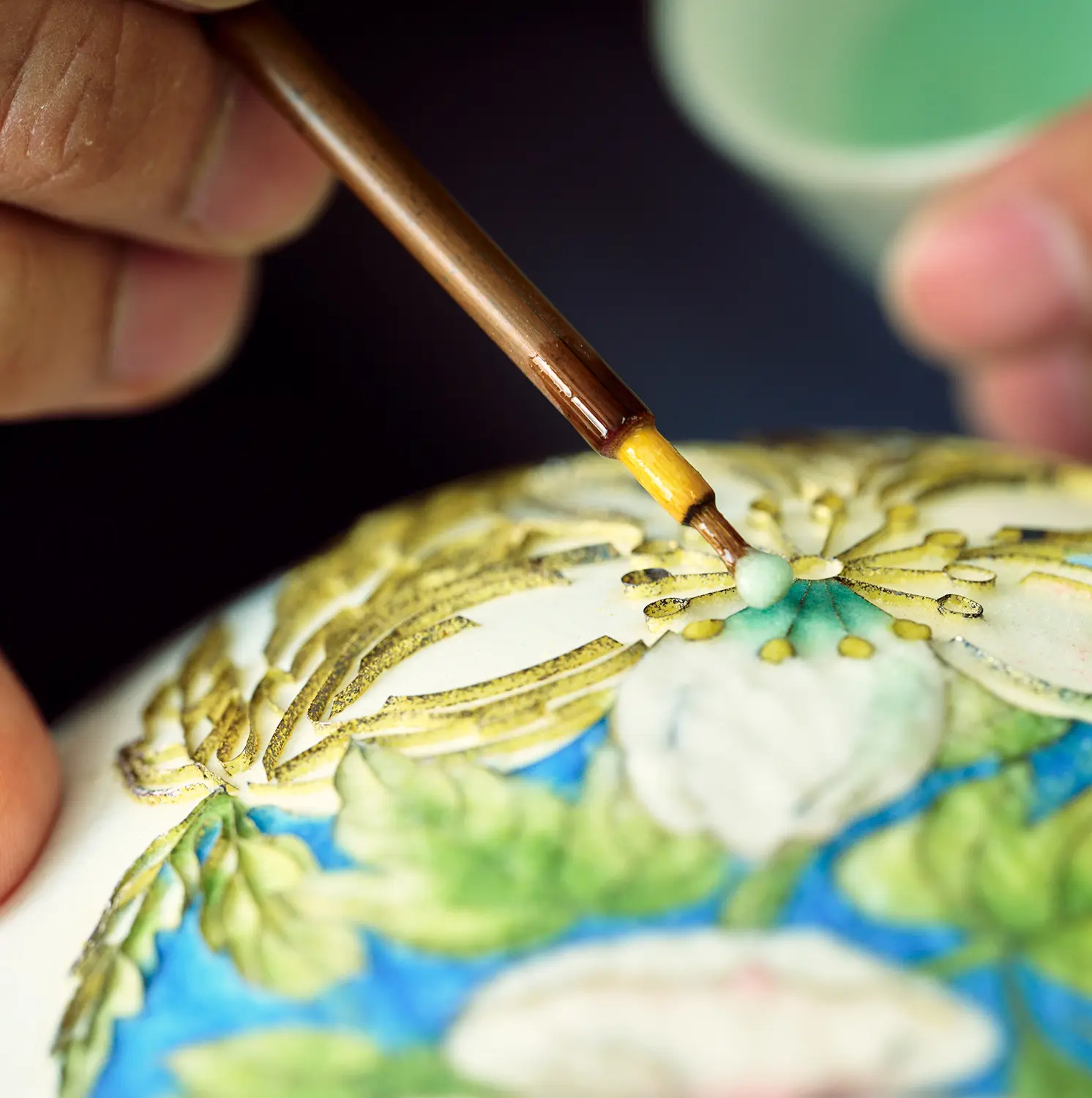
The Silk Road brought Cloisonne techniques to Japan, and with them, Tsunekichi Kaji established Owari Cloisonne in the Owari region in the late Edo period. This tradition continues today as a treasured craft of Aichi Prefecture. At Ando Cloisonne, we deliver exquisite pieces using this precious technique and nurture young artisans to preserve the valuable skills and traditions of cloisonne.
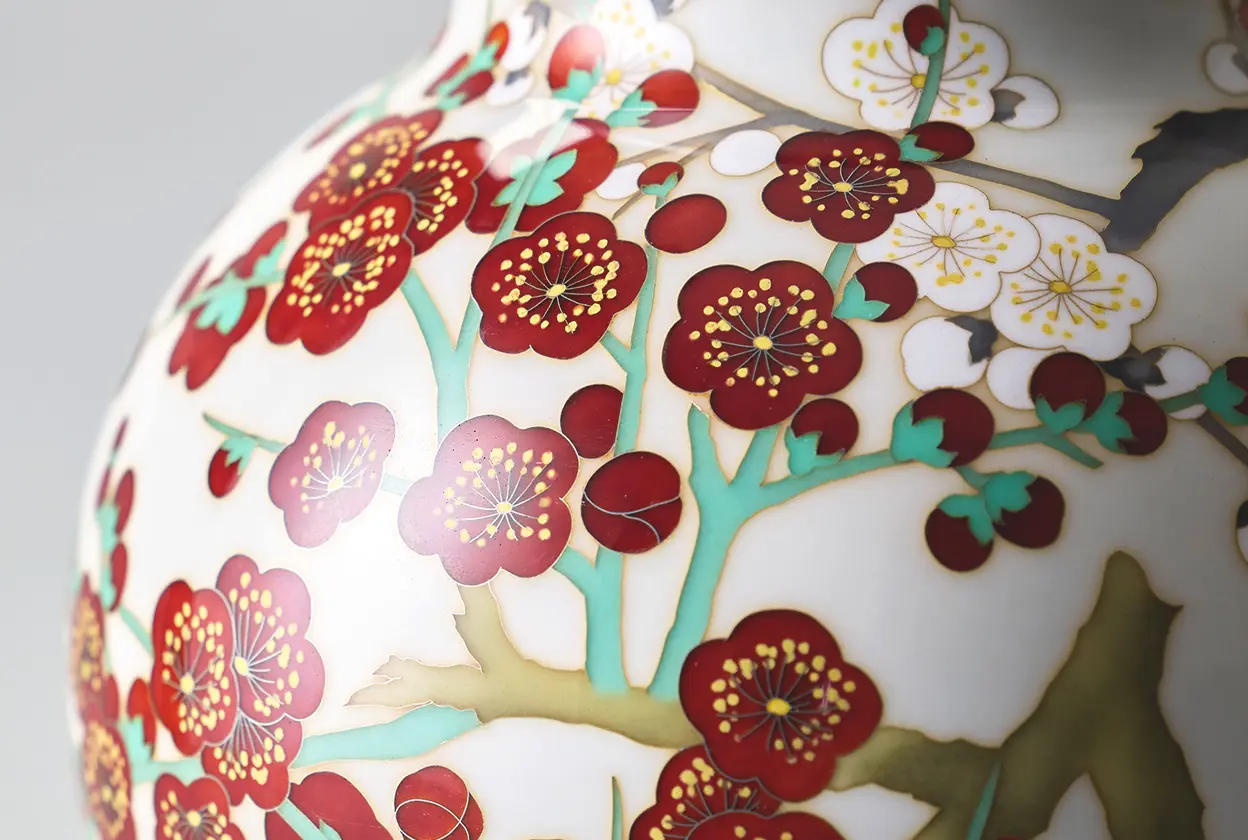
Timeless Colors that Transcend Time
The vibrancy of glass enamel in cloisonne remains unchanged over time, ensuring its enduring beauty. Being copper-based, it is more durable than ceramics or glass, making it a cherished possession for generations.
The intricate and delicate beauty of cloisonne cannot be achieved overnight. It's about inheriting traditional skills and even the process of creating modern pieces in this era, adds to the charm of cloisonne's beauty.
